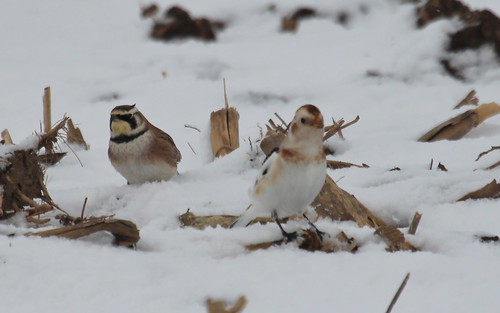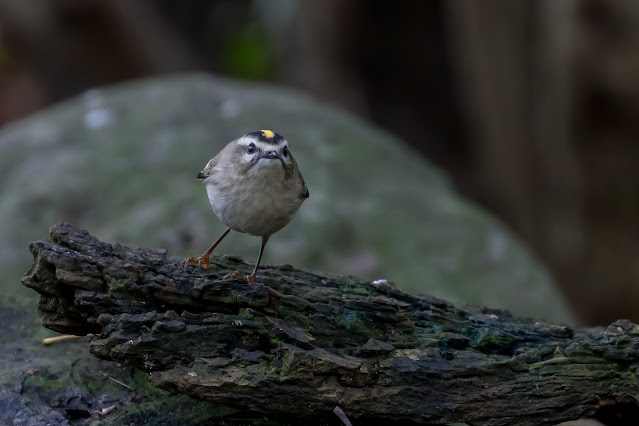Horned lark and the snow bunting.
I could get either the lark or the bunting in focus, just not both.
I tried resetting from a single spot focus to a multiple focus but, of course, the birds flew before I was ready.
There was a large mixed flock of about 200-300 birds near our place.
Scientific stuff
Eremophila alpestris (horned lark)
Adult Horned Larks eat primarily weed and grass seeds, but they feed insects to their young.
Plectrophenax nivalis (snow bunting)
The male Snow Bunting returns to its high Arctic breeding grounds in early April, when temperatures can still dip as low as -30° C (-22° F) and snow still covers most of the ground. The female does not return until four to six weeks later.
I tried resetting from a single spot focus to a multiple focus but, of course, the birds flew before I was ready.
There was a large mixed flock of about 200-300 birds near our place.
Scientific stuff
Eremophila alpestris (horned lark)
Adult Horned Larks eat primarily weed and grass seeds, but they feed insects to their young.
Plectrophenax nivalis (snow bunting)
The male Snow Bunting returns to its high Arctic breeding grounds in early April, when temperatures can still dip as low as -30° C (-22° F) and snow still covers most of the ground. The female does not return until four to six weeks later.


Comments